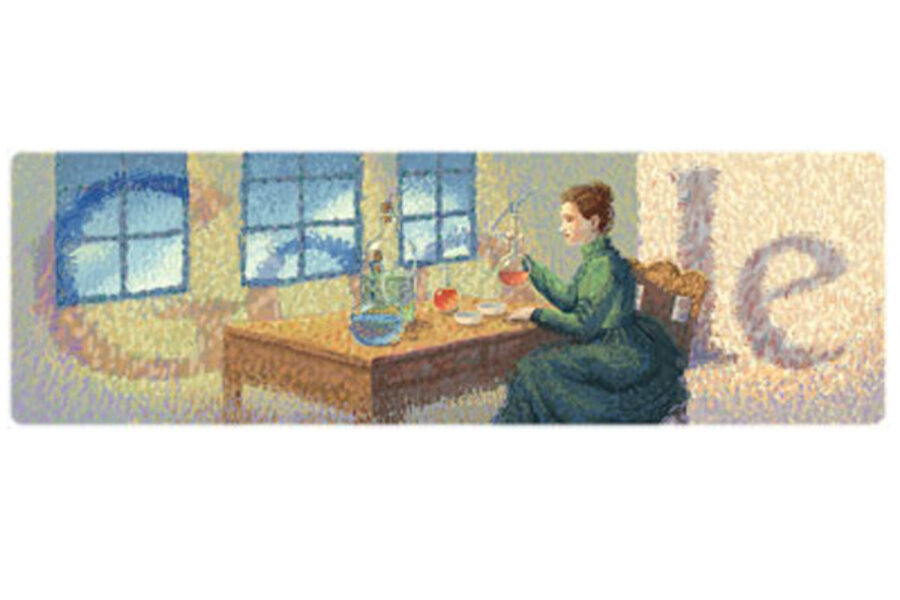Marie Curie: How she changed the world
Loading...
Marie Curie was a woman of firsts. She was the first woman to win a Nobel Prize, the first person to win two of them, and the first of only two people to win a Nobel prize in two different fields (chemistry and physics, in her case). She coined the term "radioactivity," discovered two elements, and became the first female professor at the University of Paris.
No wonder Google celebrated her birthday this week. Monday would have been her 144th birthday.
The painterly Google doodle shows Mme. Curie at a desk, surrounded by beakers, vials, and experiments.
Today's illustrated scene captures Curie pretty well. The Polish-French scientist worked tirelessly in the lab with her husband, Pierre Curie. They came together over their research into magnetism, but soon branched out into radioactivity – a field so new that Curie named it herself. People knew about X-rays at the time, but in 1896 Curie's colleague Henri Becquerel discovered that uranium salts emitted their own rays. Why? No one knew.
Curie grew fascinated by these invisible rays. How could they keep emanating (seemingly forever) without any external power source? She and her husband made huge breakthroughs in understanding radiation, including the discovery of two elements: polonium, named after her native Poland, and radium, named for its potent radioactivity.
Curie's legacy still inspires women to achieve "firsts." Lauren Redniss's recent biography of Curie, "Radioactive," is the first nonfiction graphic narrative become a finalist for the National Book Award. What the heck is a "nonfiction graphic narrative," you ask? The book reads as part history and part artwork. Redniss illustrates the story with cyanotype prints, a light and ghostly style that actually resembles the faint blue glow of radium.
The Monitor recommended the book back in February, praising how it weaves together the twin tragedies of "how Mme. Curie discovered the beautiful yet deadly element radium and how her passionate personal life seemed equally incandescent yet toxic."
While Google never really explains how or why it choses certain people for its novelty banners, one of the company's vice presidents, Marissa Mayer, has talked about the importance of presenting good examples of women in male-dominated fields, such as science and technology.
"The number one most important thing we can do to increase the number of women in tech is to show a multiplicity of different role models," Mayer told the Huffington Post earlier this year. "The stereotype of that very complete and rigid picture of what being a computer scientist means really hurts people's understanding and ability to identify with the role and say, 'Yes, this is something I can be in and want to be in.' "
So, here's to you, Marie Curie. Happy birthday.
For more on how technology intersects daily life, follow Chris on Twitter @venturenaut.
[Editor's note: The original version of this story misstated that Marie Curie was the only person to win two Noble Prizes in different categories. Linus Pauling won one in chemistry and the Peace Prize several years later.]





